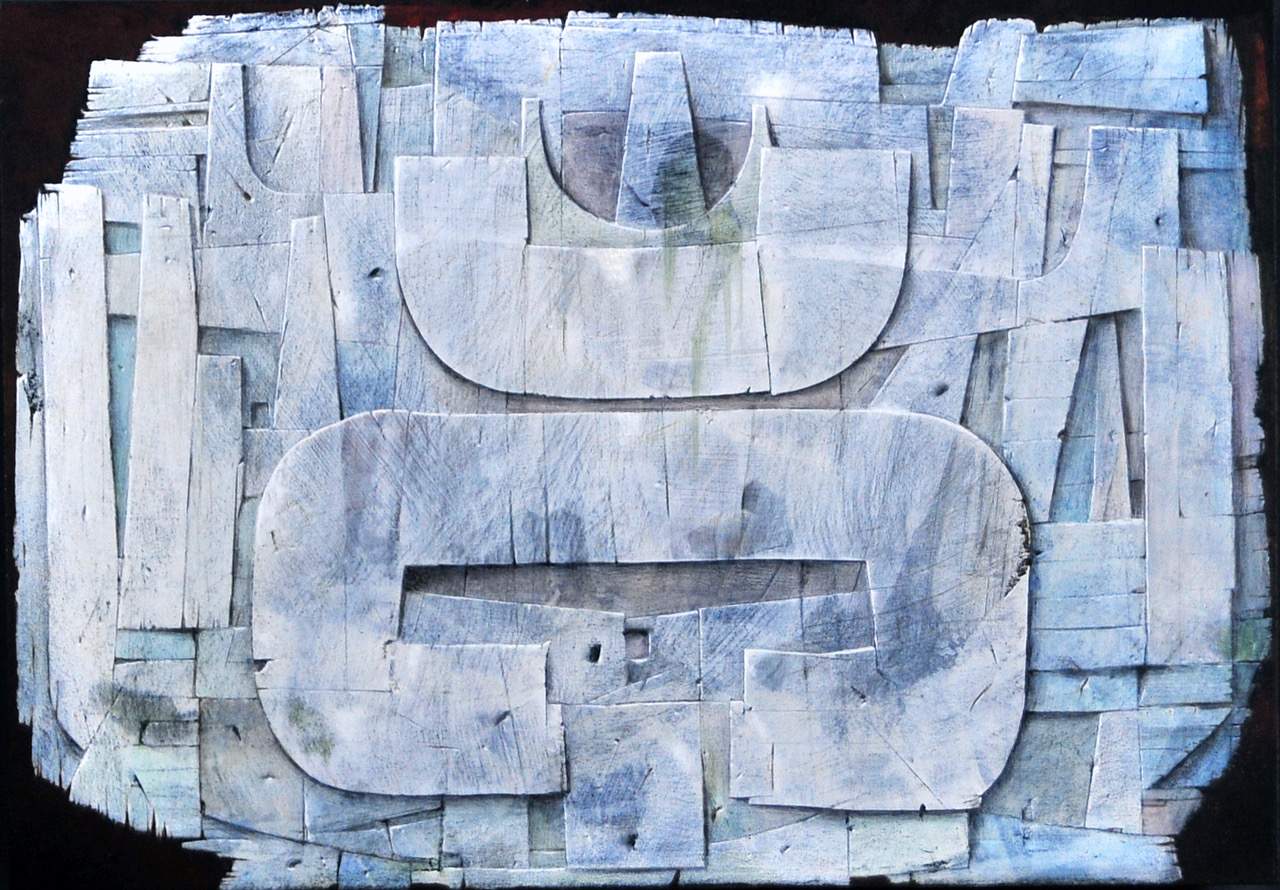From May 11 to November 24, 2019, the Fondazione Querini Stampalia in Venice is hosting a major retrospective, entitled Luigi Pericle. Beyond the visible, all dedicated to Luigi Per icle (Luigi Pericle Giovannetti, Basel, 1916 - Ascona, 2001), an artist who is the subject of a recent rediscovery, as we reported a few weeks ago on these pages. The artist, Swiss by birth but from a family of Marche origin, was appreciated in his lifetime by many of the greatest international players in twentieth-century art: from collector Peter G. Staechelin to Sir Herbert Read, trustee of the Tate Gallery, from museologist Hans Hess, curator of the York Art Gallery, to the owners of the Arthur Tooth&Sons gallery in London, where he exhibited in the 1960s alongside some of the greatest artists of the 20th century such as Karel Appel, Asger Jorn, Antoni Tàpies, Jean Dubuffet or Georges Mathieu. Pericles has also long been forgotten because in 1965, after a major and long traveling exhibition at several museums in the Anglo-Saxon area, he retired to private life imprrovisedly. He continued to work alone among the artists of the Monte Verità community near Ascona, where he had arrived in the 1950s with his wife, Orsolina Klainguti.
Today, Luigi Pericle is at the center of a major project of critical and philological recovery: the important plan of study, restoration, preservation, and cataloguing of his artistic heritage (protected by the “Luigi Pericle Archive” Association) now has one of its peaks in the Venetian exhibition, organized in the period of the 2019 edition of the Venice Biennale. This is the first stage of a valorization path that aims to entirely reconsider Pericles’ work, make him known to the general public and give him back the place he deserves in art history. The exhibition consists of fifty works, including paintings on canvas and on masonite, as well as ink on paper from the 1960s and 1970s, which are the result of a long process of reflection on the language of painting and intuitive sign as a manifestation of inner drives and a visionary investigation through the innermost layers of consciousness. In addition, on the counter designed for the Fondazione Querini Stampalia by the great architect Carlo Scarpa, to whom the exhibition area on the ground floor of the Fondazione is named, it will host unpublished testimonies, excerpts, autograph notes, analysis exercises and diary pages, along with other graphic works capable of restoring to the public the eclectic personality of the man, artist and thinker. And again, paintings dedicated to different themes and presented in the exhibition according to an order that is both chronological and thematic: pyramids and clocks(March of Time), portals(Matri Dei), moons, golems, archangels, monsters(Wood Demon or Der Hütter Der Schwelle) mindful of the lesson of Francisco Goya and his “sleep of reason” that here nevertheless oozes new possibilities for investigating the unknown.
“Painter, illustrator, scholar and all-round intellectual,” reads the exhibition’s presentation note, “Louis Pericles was influenced by theosophy and esoteric doctrines, participating in the cultural debate that was determined by these trends during the century. Pericles breathed the mystical air of Monte Verità, which welcomed from the dawn of the twentieth century the famous community founded in 1900 by Ida Hofmann and Heinrich Oedenkoven on the Hill of Utopia, where the European ’counterculture’ of the time landed. It was in those same places that, starting in the 1930s, the intellectual adventure of the Eranos meetings took shape, promoted by Carl Gustav Jung (whose Red Book was rediscovered in recent years and exhibited at the 2013 Venice Biennale) and Dutch theosopher and painter Olga Froebe-Kapteyn.”
“The volumes of literature, philosophy, Egyptian art, theosophy, and astrology that crowded his library,” the presentation continues, “nourished Pericles’ versatile knowledge, a miraculous source of an inspiration not limited to painting but entrusted to thousands of documents studded with horoscopes, writings on ufology, notebooks crowded with Japanese ideograms, cosmic symbols, Chinese medicine, and homeopathic cures.” According to Pericles, “Art reflects man’s spiritual disposition and is an instrument endowed with clairvoyance; it always has a presentiment of future happenings.” Thus, his imagery was filled with hypnotic figures, visionary scenarios, alien worlds, gates of the stars open to mechanical civilizations. Not only a painter, but also a free thinker, a writer capable of giving life addirritura to a science fiction novel set in a post-atomic dystopia (the typescript of the literary work, also forgotten, has recently resurfaced).
The exhibition, sponsored by the “Archivio Luigi Pericle” Association of Ascona, is curated by Chiara Gatti in collaboration with Marco Pasi of the University of Amsterdam (UvA) and European Association for the Study of Religions (EASR), Michele Tavola of the Gallerie dell’Accademia in Venice, and Luca Bochicchio, director of Casa Museo Jorn in Albisola, AdAC University of Genoa. The project is sponsored by, among others, the State Council of the Republic and Canton of Ticino, the Division of Culture and University Studies of DECS, the Consulate General of Switzerland in Milan, the Monte Verità Foundation of Ascona and the Eranos Foundation of Ascona. The catalog is published by Silvana Editoriale.
 |
| Venice, major exhibition on Luigi Pericles at Fondazione Querini Stampalia: the first stage of his critical rediscovery |
Warning: the translation into English of the original Italian article was created using automatic tools. We undertake to review all articles, but we do not guarantee the total absence of inaccuracies in the translation due to the program. You can find the original by clicking on the ITA button. If you find any mistake,please contact us.